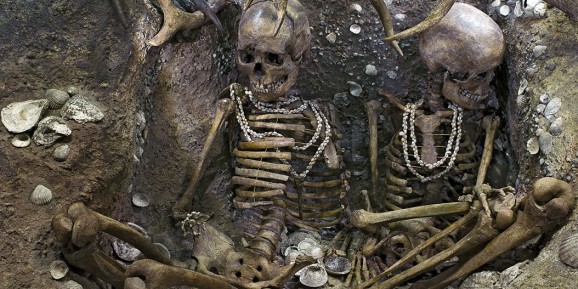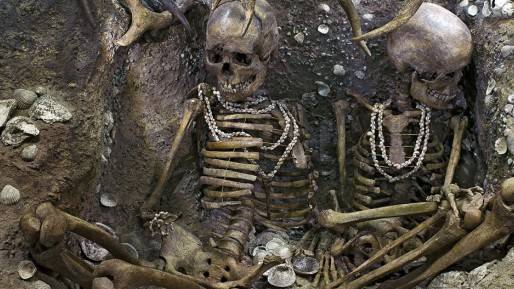Early Human Burials Varied Widely but Most Were Simple
Source: heritagedaily.com

A new study from the University of Colorado Denver shows that the earliest human burial practices in Eurasia varied widely, with some graves lavish and ornate while the vast majority were fairly plain.
“We don’t know why some of these burials were so ornate, but what’s striking is that they postdate the arrival of modern humans in Eurasia by almost 10,000 years,” said Julien Riel-Salvatore, Ph.D., assistant professor of anthropology at CU Denver and lead author of the study. “When they appear around 30,000 years ago some are lavish but many aren’t and over time the most elaborate ones almost disappear. So, the behavior of humans does not always go from simple to complex; it often waxes and wanes in terms of its complexity depending on the conditions people live under.”
The study, which examined 85 burials from the Upper Paleolithic period, found that men were buried more often than women. Infants were buried only sporadically, if at all in later periods, a difference that could be related to changes in subsistence, climate and the ability to keep babies alive, Riel-Salvatore said.
It also showed that a few ornate burials in Russia, Italy and the Czech Republic dating back nearly 30,000 years are anomalies, and not representative of most early Homo sapiens burial practices in Eurasia.
“The problem is that these burials are so rare — there’s just over three per thousand years for all of Eurasia — that it’s difficult to draw clear conclusions about what they meant to their societies,” said Riel-Salvatore.
In fact, the majority of the burials were fairly plain and included mostly items of daily life as opposed to ornate burial goods. In that way, many were similar to Neanderthal graves. Both early humans and Neanderthals put bodies into pits sometimes with household items. During the Upper Paleolithic, this included ornaments worn by the deceased while they were alive. When present, ornaments of stone, teeth and shells are often found on the heads and torsos of the dead rather than the lower body, consistent with how they were likely worn in life.
[...]
Read the full article at: heritagedaily.com






















